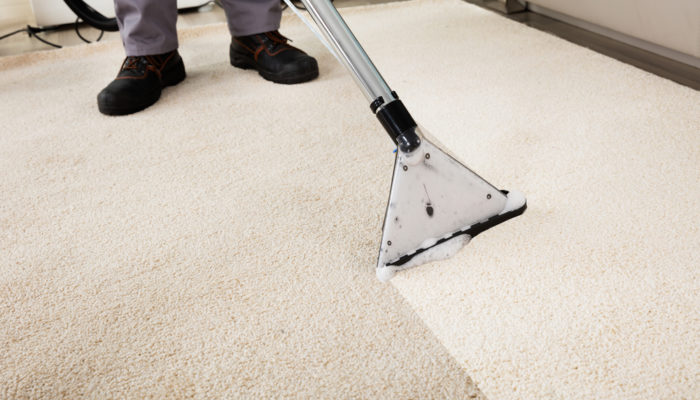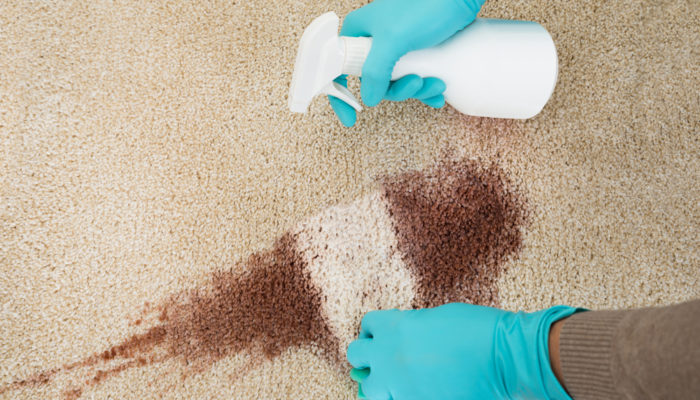This is an all-important question every homeowner should ponder. Carpets are completely different from regular…

4 Carpet Problems to Watch Out For—and How to Avoid Them
Getting new carpet installed in your home is an exciting thing. But in order to make this investment last for as long as it possibly can, it’s best to keep an eye out for the common problems that can creep up with this type of flooring. We’ve compiled a list of the most common carpet problems that homeowners can face, as well as how you can avoid these problems with your own carpeting.
Carpet Problem #1: Carpet Peaking
When carpet is installed on a hard, flat surface and its seams are put in place by adhesive tapes, the stretching of the carpet creates a 1/16-inch “V” or “peak”. This can be slightly unsightly, especially in certain lighting conditions. Side lights, for example, create shadows and thus show more of the peak.
How to Avoid It: Check with your installer to see if he has sealed the seams of the carpet before he has installed it. Sealing the seams will keep the edges of the carpet straight to prevent it from creating tension, which is the primary cause of carpet peaking. Another preventative method is to “back-roll” the carpet so that it lays flat after having been kept rolled up before use. Sometimes carpet peaking (also known as seam peaking) happens even when your installer has done everything right. Keep in mind that stiffer carpets with thick backings will peak more than softer, more flexible carpets.
Carpet Problem #2: The Carpet is Thinning Out Prematurely
If you notice that your carpet is wearing down much quicker than you anticipated, then your carpet padding may be to blame! The purpose of carpet padding is to not only provide cushion, but to also absorb the impact the carpet would take from daily wear and tear, especially in high-traffic areas. If the right carpet padding wasn’t used, then your carpet may continue to wear down much faster over time.
How to Avoid It: Think long-term and invest in a quality carpet pad with your next carpet installation. You can choose from urethane foam, waffle rubber, flat rubber, bonded urethane, and fiber cushion. Only a qualified carpet installer can guide you accordingly to get the best value for your money.
Carpet Problem #3: Loss of Pile Thickness
Carpet pile simply means the type, length, and thickness of its fibers. Carpets in high-traffic areas suffer the most, especially if they were not the best choice for such a high-traffic area to begin with. Only carpet experts can tell you which can possibly stand the daily wear and tear and all that abuse from people, pets, furniture, and stains.
Solution: It might be time for a carpet upgrade. If your carpet has seen better days, there are really only two practical alternatives: change the carpet, or put a more durable rug on top of it. The latter is fortunately very trendy at the moment!
Carpet Problem #4: Furniture Indentations
Heavy furniture or appliances standing on carpet can leave dents and marks on it. Lower-quality carpets show the most abuse. A carpet expert can advise you which type of carpet will withstand such abuse and daily wear and tear.
How to Avoid It: The only immediate solution would be to move your furniture slightly every so often, so the dents are spread out and not constantly in just one area. You can also use furniture glides or cups to protect your poor carpet. Another cool solution is to put another carpet underneath the furniture, to prevent further damage on the carpet underneath. Another option is to use a quarter to coax the fibers back up.
Avoid Carpet Problems By Being Proactive
Just like with any furnishing in your home, office, or commercial establishment, you must take great care when selecting and installing the proper type, length, and thickness of your carpet. To avoid potential carpet problems, consult the flooring experts of Carpet Direct of Northern Colorado. Contact us today to make sure your home or office flooring is always looking its best with high quality carpet that will be installed to last.




This Post Has 0 Comments